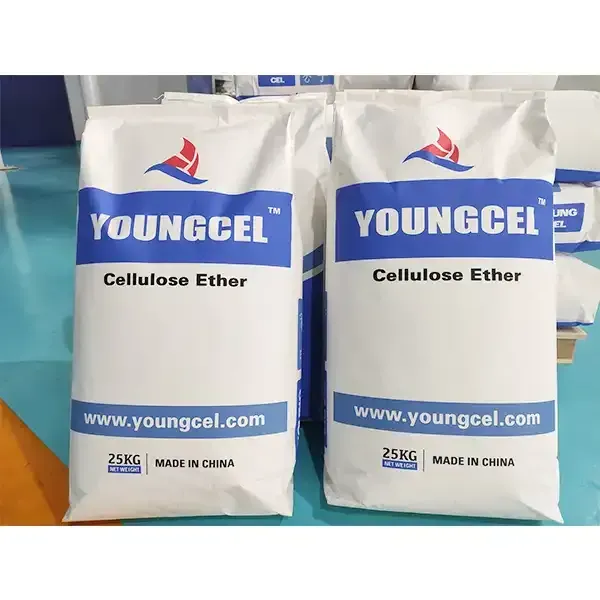Understanding Hydroxypropyl Methylcellulose (HPMC) Properties, Applications, and Benefits
Hydroxypropyl methylcellulose (HPMC) is a widely used cellulose ether derived from natural cellulose. It is a versatile compound recognized for its thickening, binding, and film-forming capabilities. HPMC has garnered significant attention in various industries, including pharmaceuticals, food, cosmetics, and construction, owing to its unique chemical composition and functional properties.
Properties of HPMC
The properties of HPMC can be attributed to its molecular structure, which includes hydroxypropyl and methyl groups. These groups enhance water solubility, allowing HPMC to create gels and viscous solutions when dissolved in water. One of the critical characteristics of HPMC is its ability to form a stable gel at a broad range of temperatures and pH levels. This thermal stability and solubility make it a preferred choice for various formulations.
Another notable property of HPMC is its non-ionic nature, which translates to compatibility with a wide range of substances. This characteristic is particularly beneficial in pharmaceutical formulations, where HPMC can be mixed with active pharmaceutical ingredients (APIs) without affecting their efficacy. Additionally, HPMC is odorless, tasteless, and non-toxic, which makes it suitable for use in food and personal care products.
Applications of HPMC
1. Pharmaceutical Industry HPMC is extensively utilized in the pharmaceutical sector as a binder in tablet formulations and as a thickening agent in topical applications. Its ability to control drug release rates makes it an ideal candidate for sustained-release and controlled-release formulations. HPMC is also used in eye drops and other liquid formulations where viscosity control is crucial.
2. Food Industry In the food sector, HPMC serves as a food additive that improves texture, moisture retention, and overall quality. It is commonly found in gluten-free products, sauces, dressings, and baked goods. HPMC helps create a desirable mouthfeel while extending shelf life by preventing moisture loss.
3. Cosmetics and Personal Care The cosmetics industry benefits from HPMC’s thickening and film-forming properties. It is commonly used in formulations such as lotions, creams, and gels. HPMC enhances the feel and application of products on the skin, contributing to a smoother texture and improved product stability.
hydroxypropyl methyl cellulose hpmc

4. Construction In construction, HPMC is used as an additive in cement and plaster formulations. It enhances workability, water retention, and adhesion, making it easier to apply these materials. Furthermore, HPMC contributes to the overall strength and durability of construction materials, making it an essential component in modern building practices.
Benefits of HPMC
HPMC boasts multiple benefits that make it a valuable ingredient across various industries. Firstly, its biocompatibility means it is safe for use in products intended for human consumption or application. This quality is crucial in pharmaceuticals and food applications where safety is paramount.
Moreover, HPMC's versatility allows manufacturers to modify its viscosity and gel strength, tailoring it to specific requirements. This flexibility results in a wide range of product formulations, meeting diverse consumer needs.
Another advantage is its ability to improve the performance of other ingredients. In pharmaceuticals, for instance, HPMC can enhance the bioavailability of certain drugs by controlling their release, ensuring more effective therapeutic outcomes.
Environmental Considerations
As a cellulose derivative, HPMC is considered a more sustainable option compared to synthetic polymers. Its natural origin aligns with the growing demand for eco-friendly products, making it an attractive choice for environmentally conscious consumers and manufacturers.
Conclusion
Hydroxypropyl methylcellulose (HPMC) stands out as a multifunctional ingredient that plays a crucial role in numerous industries. Its unique properties, such as solubility, thermal stability, and compatibility with various substances, make it indispensable in pharmaceuticals, food, cosmetics, and construction. The benefits it offers, combined with its environmentally friendly nature, suggest that HPMC will continue to grow in significance as industries strive for innovation and sustainability in their formulations. As research and development advance, HPMC’s potential applications may expand even further, cementing its position as a vital component in modern science and industry.
-
The Application and Significance of Construction RdpNewsMay.19,2025
-
Industrial Grade HpmcNewsMay.19,2025
-
Building Coating Adhesive Building Coating Adhesive HpmcNewsMay.19,2025
-
Application Of Hpmc For Detergent For Detergent In DetergentsNewsMay.19,2025
-
Application Of Hpmc Cellulose In Cement-Based MaterialsNewsMay.19,2025
-
Application Of High Quality Hpmc For Construction In The Field Of ConstructionNewsMay.19,2025




